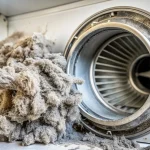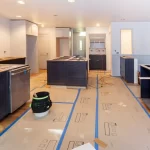Navigating the complexities of NSPIRE (National Standards for the Physical Inspection of Real Estate) compliance can be daunting for property owners and managers. The new standards, which aim to enhance the quality of housing, present both opportunities and challenges. Adhering to these rigorous protocols ensures better living conditions but also requires a robust understanding and implementation strategy. Let’s explore the issues associated with NSPIRE compliance and how establishing a Maintenance Plan for NSPIRE Compliance can mitigate these challenges.

Content
Understanding NSPIRE Compliance
NSPIRE introduces a more holistic approach to property inspections, emphasizing health and safety. It includes more frequent inspections and a focus on critical areas such as electrical systems, plumbing, heating, ventilation, and structural integrity. The goal is to ensure that residents live in safe, habitable conditions that promote their well-being. However, this increased scrutiny means property owners must be proactive and meticulous in maintaining their properties.
Challenges of NSPIRE Compliance
- Frequent Inspections: NSPIRE mandates more regular inspections, which can be resource-intensive. Property managers need to be prepared for unannounced inspections, ensuring that all aspects of the property are consistently up to standard.
- Detailed Protocols: The comprehensive nature of NSPIRE protocols means that every element of the property, from major systems to minor details, must meet specific criteria. This can be overwhelming without a clear plan.
- Increased Costs: Meeting NSPIRE standards can involve significant investment in repairs and upgrades. For properties with longstanding maintenance issues, the financial burden can be substantial.
- Knowledge and Training: Ensuring compliance requires an in-depth understanding of NSPIRE standards and ongoing training for staff. Without proper education, property managers may struggle to keep up with requirements.
Benefits of a Maintenance Plan for NSPIRE Compliance
Implementing a maintenance plan is crucial in overcoming these challenges. A well-structured maintenance plan ensures that all aspects of the property are regularly inspected, repaired, and upgraded as necessary. Here are some key benefits:
- Proactive Management: Regular maintenance prevents small issues from becoming significant problems. By addressing potential issues early, property managers can avoid costly repairs and ensure compliance.
- Consistency: A maintenance plan provides a structured approach to property management. Scheduled inspections and maintenance tasks ensure that all areas are consistently up to standard, reducing the likelihood of non-compliance.
- Cost Efficiency: While there is an upfront investment in regular maintenance, this approach can save money in the long run by preventing major repairs and extending the lifespan of property elements.
- Compliance Assurance: With a maintenance plan, property managers can be confident that they are meeting NSPIRE standards. This reduces the stress of inspections and helps avoid penalties for non-compliance.
- Resident Satisfaction: Proactively maintaining properties not only ensures compliance but also improves living conditions for residents. Satisfied residents are more likely to stay long-term, reducing turnover and vacancy rates.
Conclusion
NSPIRE compliance presents significant challenges for property owners and managers, but these can be effectively managed with a comprehensive maintenance plan. By adopting a proactive approach, property managers can ensure that their properties meet the rigorous standards set by NSPIRE, ultimately providing safer and healthier living environments for residents. Establishing a Maintenance Plan for NSPIRE Compliance is not only a strategic move for compliance but also a commitment to quality and resident well-being.

With a passion for matching clients with their dream homes, Mary’s experience and knowledge of the real estate market make her a trusted advisor. She’s your go-to expert for buying or selling properties in the heart of the city.





